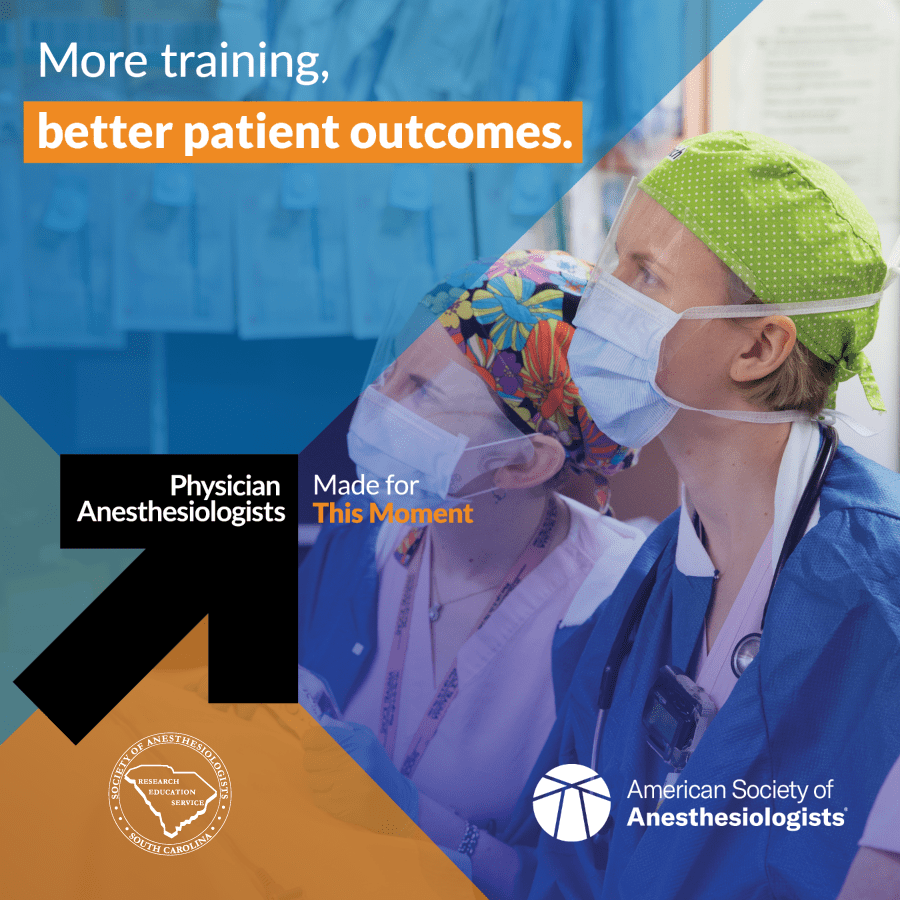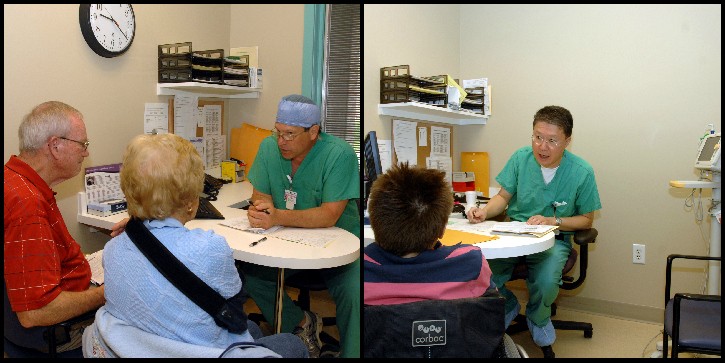
Learn why no other member of the Anesthesia Care Team can match an anesthesiologist’s ability to navigate life-and-death moments in patient care. Read physician anesthesiologists’ firsthand accounts of ensuring patient safety.
I’m on a 24hr call currently and just started an emergent endovascular/exploratory laparoscopy case on a recently vomiting person with SMA occlusion and likely dead bowel. I discussed the plan with my CRNA and I did an RSI. During my CRNA’s first attempt to intubate with a miller 2 the nurse anesthetist was unable to obtain better than a grade 3 view and could not blindly pass a tube. During the nurse anesthetist’s second attempt with the same blade and my recommendation to use a shoulder roll that we placed, they were only able to intermittently get a grade 2b view.
I offered a bougie which they attempted to use but were unable to pass it successfully. I asked our tech to get a CMAC in the meantime. We then had to mask our patient. I directed that we try a MAC blade while waiting. My CRNA asked me if I would take over and intubate. I did so, with a reasonable grade 2b view, successfully on one attempt with a MAC blade and bougie. Overall, the CRNA’s inability to intubate on two attempts put the patient at aspiration risk during intubation and unplanned mask ventilation, caused visible oral trauma and bleeding with likely sore throat/tongue/mouth when he wakes, and my CRNA deferred to me repeatedly for suggested changes and eventual success only when I physically took over.
A few months ago I took over a case midway through with a CRNA I just met. It was an abdominal procedure with removal of bowel amongst other things. The case had gone very straightforward over several hours. I was paged automatically by our system when the CRNA was starting emergence (to wake the patient up). When I walked in I quickly noticed the arterial line showed profound hypotension that started during closure of the patient. I immediately asked if something was wrong and why the blood pressure was so low.
The CRNA was unaware the blood pressure was low and questioned that it was real. I quickly confirmed and treated the low blood pressure aggressively with vasopressors and intravenous fluids, notified the surgeons and asked about blood loss and any concerns prior to closing, and asked for an arterial blood gas from my anesthesia technician. The arterial blood gas showed a hemoglobin of 5 with acidosis and large base deficit. I ordered and started a blood transfusion. I also informed the surgical resident that he needed to call the attending surgeon back in to open the abdomen. We were able to resuscitate the patient while the surgical team opened the abdomen and found an arterial bleed that needed to be ligated. They closed and the patient did well.
The CRNA was narrow sighted in management and completely negligent of the life threatening pathology while focusing solely on “waking the patient up.” If I had been late or busy in another room, the patient would have been extubated with continued abdominal bleeding and hypotension, the issue would have been realized in PACU and treated by recovery nurses prior to calling for an attending anesthesiologist, and overall this would have resulted in significant delay to return to the operating room. It would have then become very dangerous to induce general anesthesia a second time for the patient who potentially could have died in PACU or during this induction.
We were performing a pacemaker implantation, and I noticed that the pulse oximeter suddenly showed no reading. Upon questioning, the CRNA began to check the cable. The end tidal CO2 monitor then quickly trended toward a zero reading, which can mean there is no cardiac output. Still, the CRNA said “the sample line must be occluded”. The cardiologist was reluctant to be distracted from his procedure. I loudly expressed my concern and quickly convinced them both by showing them a non-beating heart on the live fluoroscopic x-ray. My intuition was correct that the patient’s lack of a heartbeat was PEA (pulseless electrical activity). The patient was essentially dead. Chest compressions were immediately begun and my pharmacological interventions were successful in restoring a normal heartbeat. The pacemaker was successfully placed and the patient was able to go home the following day.
We were in progress with a planned removal of a patient’s lung for cancer resection. The surgeon identified malposition of the stapler which partially crossed the main pulmonary artery. The stapler then malfunctioned and a large hole was torn in this vital blood vessel. The CRNA and I immediately functioned as an incredibly efficient team, with me ordering the clinical plan and us both coordinating administration of medications and checking and very rapidly administering large amounts of blood and blood products. It would have been impossible for one person to have done all that was immediately absolutely necessary to save this patient, especially if I had not anticipated the potential problems and placed large-bore IV access before the surgery. This patient would have had no chance for survival without the presence of a skilled multiprovider anesthesia team.
I was called to the room to assist in oxygen desaturation for a patient undergoing exploratory laparotomy from MVA trauma. Oxygen saturation was 85%, blood pressure was beginning to sag and become less responsive to pressors. I asked them what they had attempted so far as I scanned the vital signs and equipment. I was told they went up on tidal volume and O2 to 100%. I asked if they had checked the breathing tube placement, listened to the lungs, checked the breathing circuit connections, suctioned the airway or mucus, etc. All of the answers were no. They assumed it was related to blood loss. I explained, as I performed my checks, that that is possible but we still need to check our side. It ultimately was an ETT that migrated to right main stem bronchus and a loose circuit. When corrected and the patient became stable. No blood products were needed.
While inducing anesthesia in a patient with sepsis, the patient became increasingly tachycardic. As I rapidly administered IV fluids for the patient and decreased our anesthetic, I noticed the CRNA about to use esmolol, which slows the heart rate. I asked them to hold giving the medication and reminded them that a septic patient needs an elevated heart rate to keep the blood pressure in a survivable range and that giving that medication at this time could cause an irreversible spiral downward. The patient needed a fast heart rate to survive, and the CRNA wanted to give medicine to slow it down.
While in an emergent heart case, the surgeon called out that there was “now a hole in the heart”. As the pressure drifted to the lower end of normal the CRNA was grabbing for a medication to increase the blood pressure. I asked them to stop and explained that in this scenario we need a lower blood pressure to decrease the amount of blood coming out of the hole so the surgeon could identify it and repair the hole. Proper management of this rare circumstance was lost on the CRNA.
During a heart case I was called to the room to assist in a patient that was not responding as the CRNA thought they would to treatment. They had looked at the transesophageal echo image and informed the surgeon that the heart did not have enough blood in it to keep the pressure up, and that they would give more blood volume. The CRNA and surgeon told me the attempts he had done to keep the pressure up were not working. In fact, the blood pressure was getting worse. I used the ultrasound and showed the CRNA that the image they had used was off plane and that when done correctly the heart was not under filled, but that the right side of the heart was weak and not able to handle the extra volume they gave. In other words, improper technique and interpretation of the ultrasound led to an error in treatment which caused right-sided heart failure and a worsening of the life-threatening clinical situation. We then used the existing cannulas to remove the extra volume allowing the heart to recover and the patient did fine.







